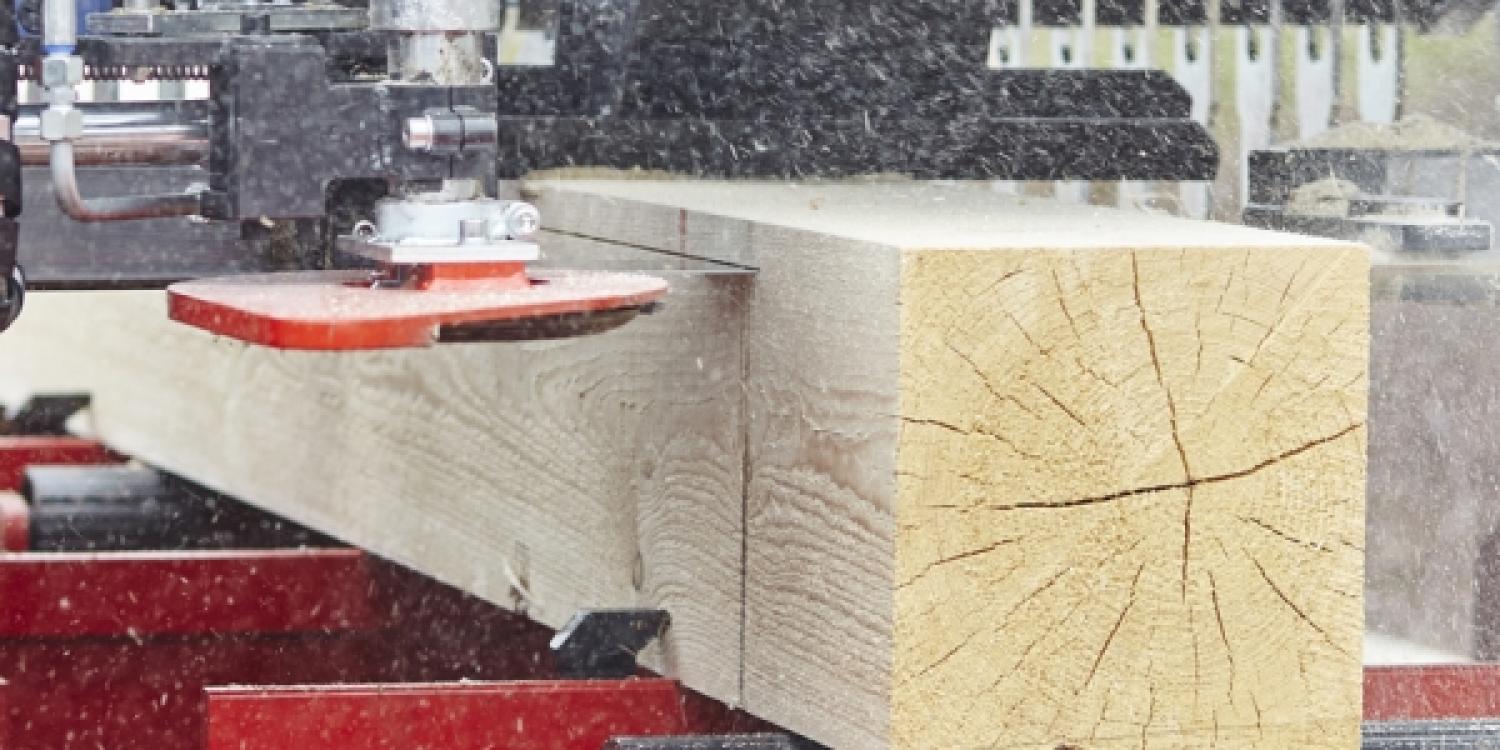Maximising recovery rate in woodworking industry

Information
Raw material costs in woodworking industry are significant: they form approximately 70-80 % of the total production costs of sawn wood and more than 50 % of the production costs of more downstream products such as wood panels.
Significant material loss results from sawing processes, as well as trimming and cutting in downstream production. Several factors affect the yield in sawing, and even small adjustments can bring immerse savings. A miscalculation of just 1 mm in the log dimensions can cause over 20 000 euros in raw material losses for a sawmill that uses 50 000 cubic metres of raw material per year.
Benchmark data based on the best available circular sawing technologies in Central Europe suggest the following yields:
- Roundwood (fresh, after debarking) to sawn wood, main yield: softwood 48 %, hardwood 38 %
- Roundwood to Glulam, overall efficiency: softwood 45 %, hardwood 35 %
- Roundwood to wood panel, overall efficiency: softwood 41 %, hardwood 30 %
There are several ways to improve recovery rate and minimise raw material losses during trimming and cutting:
- Using optical, X-ray or 3D scanners to optimise sorting and sawing; the earlier in the process you determine the dimensions of the log, the more optimal the use of raw material
- Using technology for repositioning the sawing blades; adjusting the sawing angle according to variations in the dimensions and quality of the logs
- Regularly maintaining equipment; sawing with a dull blade not only causes material losses due to quality issues, it also needs more power and consumes more energy
For producers of downstream products, there are also several ways to maximise efficient use of wood:
- In the design stage, consider the possibility of using different quality grades for different parts of the product – e.g. visible vs. internal or draped parts
- Also in the design stage, consider the required dimensions of different components and optimise the amount of raw material – changing the width or length of a component slightly can bring significant savings, if the volumes produced are large
- Consider if you can reduce different types of materials and different dimensions of components used in your products
- In procurement, order timber in dimensions which relate to the product dimensions in an optimal way
By improving the recovery rate of wood raw material, you directly improve the cost efficiency and competitiveness of your company, and reduce environmental impacts. Procuring timber in optimal dimensions and quality grades even brings savings on labour and time spent on cutting material.